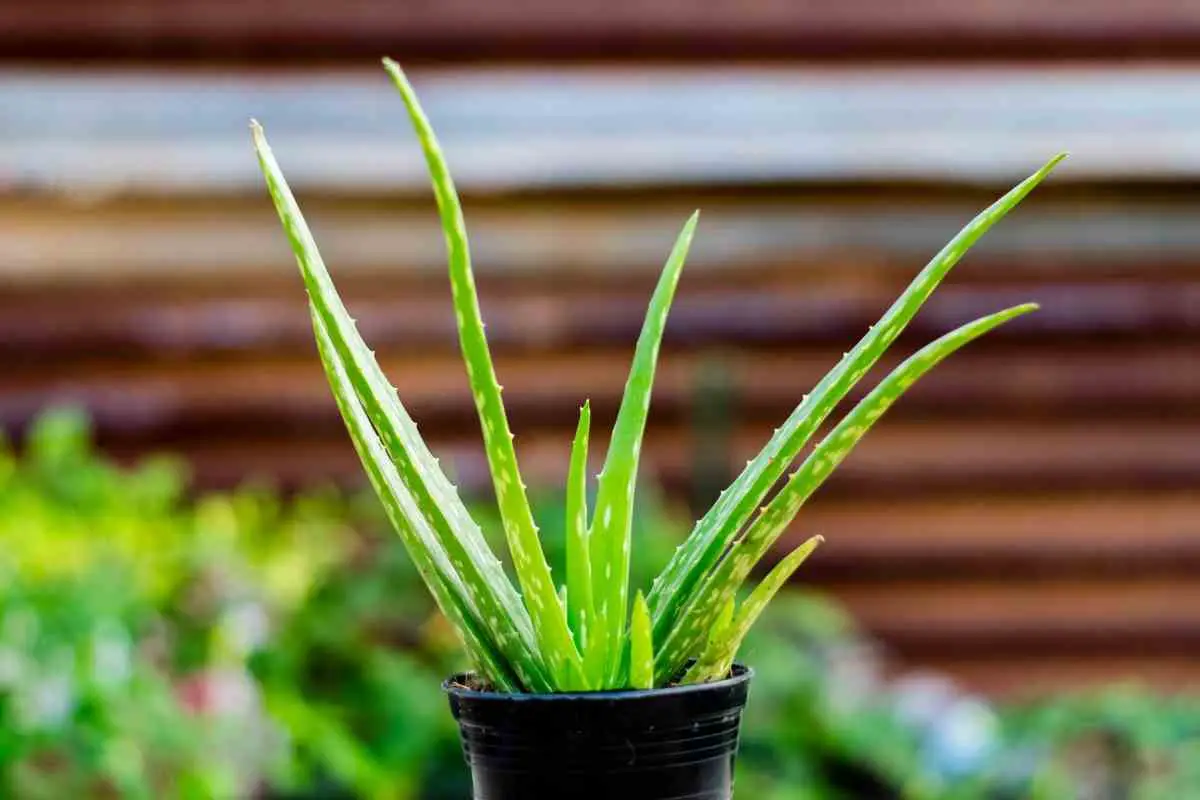Aloe vera plants are a common houseplant, and they are great to have around.
The plants are resilient and extremely easy to take care of, and they have healing properties that can heal burns.
Even though they can heal you when you accidentally burn yourself, they can’t heal from being sunburnt without your help.
Luckily there are ways that you can revive a sunburnt aloe vera plant.
How To Identify a Sunburnt Aloe Plant
Aloe vera plants are succulents that love the sun, as long as it’s sitting in indirect sunlight.
If direct sunlight shines on the plant for too long, the medicinal leaves will dry up and die.
If your aloe plant starts looking a little worse, several things could be wrong, and it may not always be from the sun.
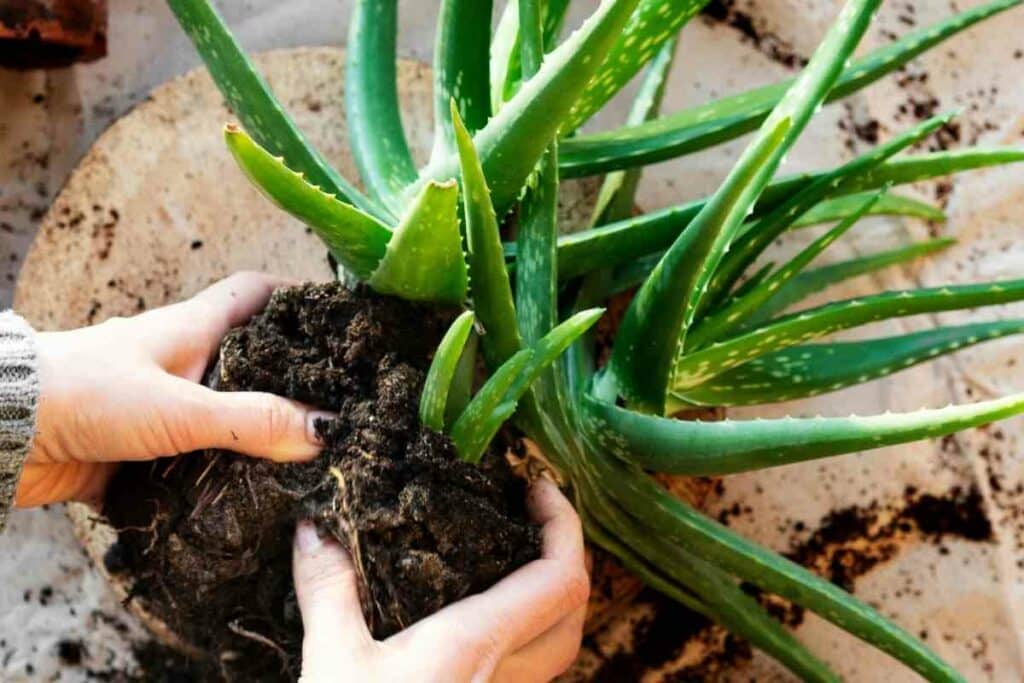
So how do you know if your plant is sunburnt?
Here are some things to watch for.
Brown Leaves
The first sign of a sunburnt aloe plant is a discoloration in the leaves.
This can start at the tips, spots can appear randomly, or the entire leaves can turn brown.
The browning is caused by a combination of too much sun damaging the plant cells and a reduction in the amount of chlorophyll produced.
Remember This – Chlorophyll is what gives plants the green color, and when the sun is damaging the plant cells, those cells are going to cease chlorophyll production.
Droopy Leaves
When aloe vera plants receive too much sunlight, they start to dry up, and the previously plump leaves lose some of their mass.
Without the fullness of the leaves, there’s no support left to hold the leaves up, and you’ll notice droopy or wilting leaves.
Dry Soil
It’s good to let your soil dry out periodically between waterings, but if your soil is too try, it’s a good sign your aloe vera plant might be sunburnt and has tried to absorb every last drop of moisture.
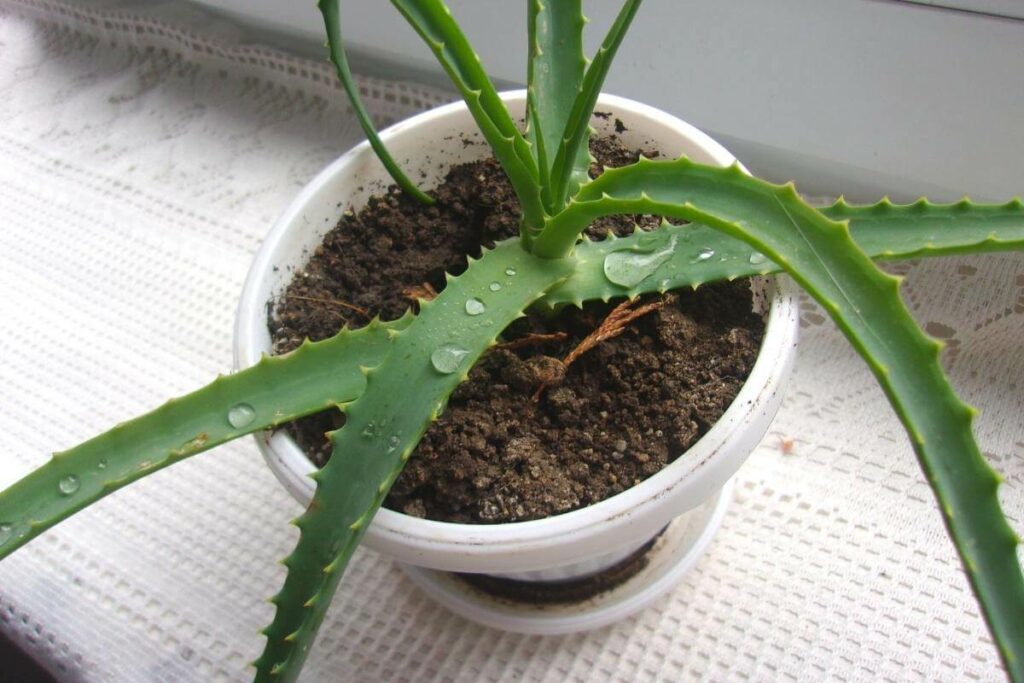
If your soil becomes too dry, you can risk turning your soil hydrophobic, which means it won’t hold onto water and your plant can burn.
Hydrophobic soil can be fixed with a few methods of rehydration, but it’s better for your plant to not let it get to that point.
The other most common issue with aloe plants is overwatering.
Taking Action – If you notice any mushy or waterlogged spots on the leaves of your aloe plant you should immediately cut back on how often you are watering and let the soil dry out.
How to Revive a Sunburnt Aloe Vera Plant
The greatest advice for reviving a sunburnt aloe plant is to follow the three Rs:
- relocate
- rehydrate
- and remove
1. Relocate
The very first thing you should do with a sunburnt aloe plant is to relocate it.
If your sun-loving aloe plant is sunburnt, it’s because it is receiving too much direct sun.
The best place for an aloe plant is in a room that receives plenty of light during the day but put the aloe plant out of the direct sun.
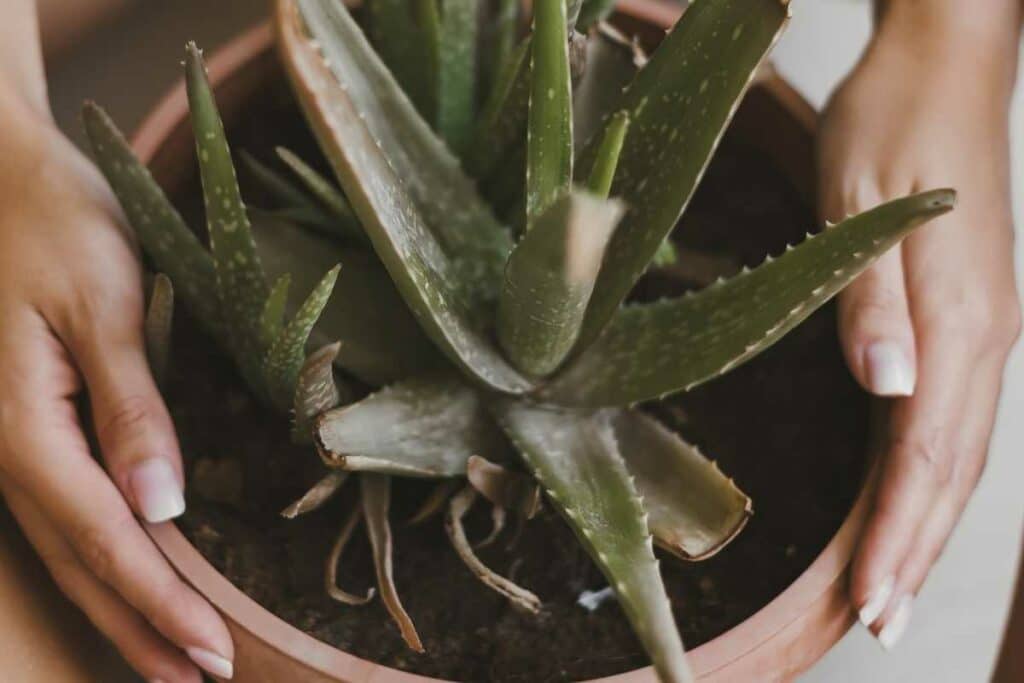
Set on a table or the floor off to the side of a window or door is the perfect spot.
2. Rehydrate
If your aloe is sunburnt, it’s also probably thirsty.
It may be tempting to give your aloe a really good watering to help it recover, but it’s still a succulent and they don’t like lots of water.
Instead – Just give your aloe enough water to wet the roots, and let it dry out again before adding more water.
You can usually water your aloe again after 3-5 days.
Aloe plants aren’t used to frequent waterings, so you don’t need to keep it on a set schedule.
Now that your succulent is out of direct sunlight, watering it a couple of times a week, or even once a week depending on the humidity in your home, is more than enough.
3. Remove
Inspect each of the leaves on your aloe plant.
If more than 50% of the leaf is damaged by the sun, it should be carefully removed so energy from the plant can go towards the healthy leaves.
To remove the damaged leaves, use a sharp and sterilized knife to cut the leaf off at the base.
It’s important to use a sterile cutting tool so you don’t add bacteria to your plant which can cause diseases or additional problems with your plant.
How to Prevent Sunburn on an Aloe Vera Plant
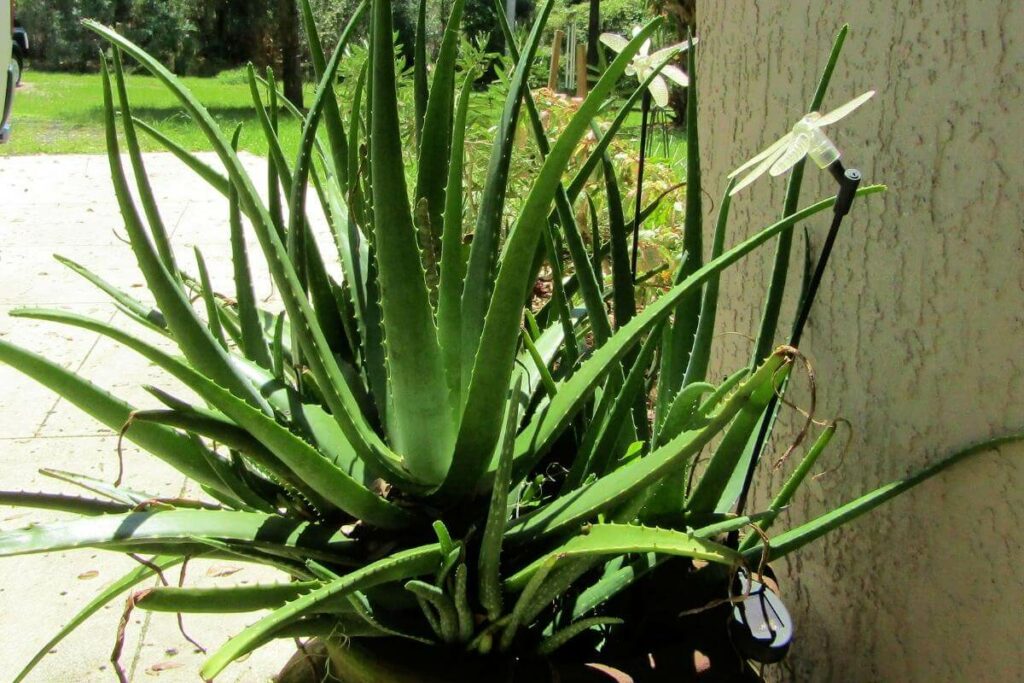
A sunburnt aloe vera plant is pretty serious and slightly ironic, but it is easy to prevent.
Acclimate Your Aloe Vera Plant
The biggest way to prevent sunburn on your aloe plant is to leave the plant out of direct sunlight in the first place.
If you don’t have anywhere else to put an aloe plant except in direct sun, you should acclimate it.
You can acclimate an aloe plant by slowly introducing it to direct sunlight for increased periods of time over several weeks.
Start by leaving your aloe in full shade for a week.
At This Point – There should be no direct sun on your aloe plant.
Then move your aloe plant into full sun for 2 hours every morning for a week.
At this stage, you will need to move your plant into the sun, and back out of the sun every day for the week.
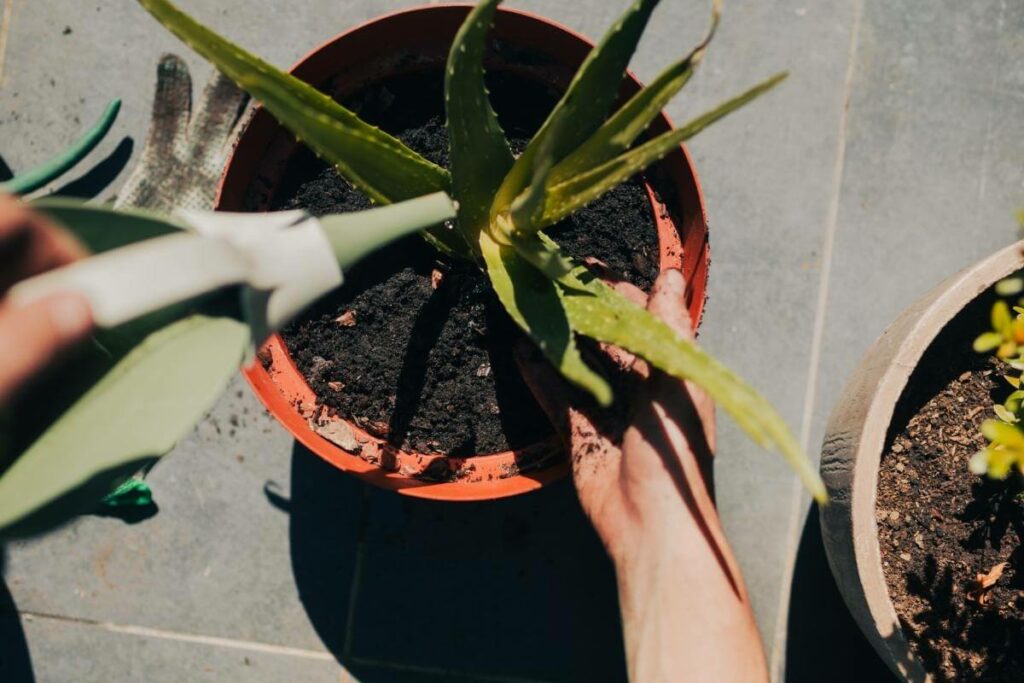
Now that you have a sunny spot for your aloe, start adding an additional 2 hours of sunlight a day per week until your aloe doesn’t need to be moved out of the window.
Be Careful When Watering
Have you ever seen someone use a magnifying glass to start a fire?
The same thing can happen to your aloe plant on a hot day.
If water droplets are left on the leaves of your aloe and it’s in direct sunlight, those drops can act as a magnifying glass and start a fire on your plant.
Key Takeaway – It doesn’t take long for this to happen, so be sure to remove any water droplets before they have a chance to heat up or move your plant out of the sunlight.
Final Thoughts
Take care of the plants that can take care of you.
Sunburn is pretty serious for an aloe plant, but it’s pretty easy to fix.
Just remember the three Rs of reviving an aloe plant; relocate, rehydrate and remove the severely damaged leaves.
Combined with a few preventative measures to avoid sunburn happening in the first place, you’ll have a thriving aloe vera plant.
